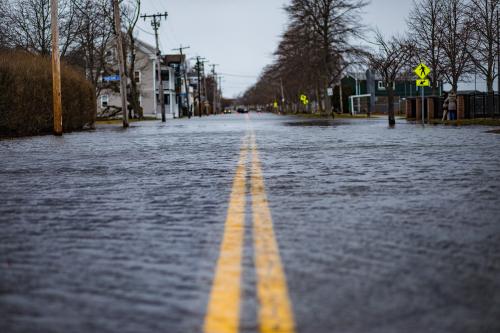It is a pleasure and an honor to come before the United States Commission on Civil Rights to discuss the sensitive and difficult topic of environmental justice. I have been asked to keep these remarks brief and I will.
The essence of my perspective is that environmental justice has succeeded remarkably well as a rhetorical platform but unavoidably faired much less well as a practical policy orientation. There are a number of reasons for this and I will highlight what I take to be the most significant among them.
However, let me first observe that environmental justice activists have, beyond all doubt, accomplished two extremely impressive things.
First, they have effectively injected equity concerns deeply into our national environmental policy discourse. They have clearly triumphed at what political scientists call “agenda setting,” dictating that some set of concerns will receive active attention by politicians, academics, government agencies and the media. Mobilized neighborhoods and their representatives now have the ear of public health and environmental officials. Studies are being conducted, reports written, task forces convened, and so on. None of this (including this briefing) would have happened without the environmental justice movement.
Second, environmental justice activism has scored clear victories in forcing the delay, reconsideration, and sometimes the complete abandonment of proposed facilities. At the very least, siting sponsors find that the old ways of doing business are no longer viable because challenging questions are being posed by participants who were not at the table when our landmark environmental laws were being crafted a generation ago.
The Environmental Protection Agency has said, both during the previous administration and in the current one, that the term “environmental justice” means two things: fairness and inclusion. That was Administrator Carol Browner’s formulation and the environmental justice memorandum signed by Administrator Whitman on August 9 appears to appropriate it intact.
Let us put aside, for the moment, the difficult problem of what “fairness” and “inclusiveness” require in a practical sense. I would suggest both to the Commission and to the EPA that environmental justice policymaking ought to require yet a third thing: honesty. As we strive for participatory and accessible processes, and just decisions, there are some things to keep firmly in mind.
First, the term “environmental justice” continues to elude precise definition, which is not surprising given that the purpose for which it was devised was political and not analytic. The rubric binds a diverse grassroots movement together, effectively commands attention from the Establishment, and announces to the general public that what is sought is also deserved. Most of what are regarded as local environmental justice issues are, in fact, simply “not-in-my-backyard” (NIMBY) disputes in which some version of racial or ethnic politics has arisen.
Second, the largest grievances being raised under the environmental justice rubric cannot effectively be addressed by any realistic regime of environmental policy. If one wants to preserve and enhance health in low-income and minority communities (and if by “health” one means a reduction in disease, disability and premature death) then environmental justice is an exceedingly weak vehicle (for reasons I can elaborate on if you like). The EPA and public health authorities ought to be hammering home that essential point far more aggressively than they have so far.
I would make a similar observation regarding the economic aspirations that underlie environmental justice. People with lots of money generally enjoy more choices, and louder political voices, than poor people. We should try harder than we do to address the most egregious imbalances and risks that result. But we are not going to abolish the market economy or private property. We can neither banish all pollution nor equalize its incidence. We will, moreover, continue to have limited resources with which to confront our vast menu of environmental problems. These essential facts of environmental life imply that unequal proximity to pollution will endure, and that we must choose carefully where and when to intervene. This, in turn, means that we must have some scheme of environmental justice priorities. And these must come from policymakers, not the advocacy community, because the environmental justice movement (like most diverse coalitions) is resolutely unable to generate them.
In the end, I think environmental enforcement can yield real benefits for low-income communities and communities of color. I believe it can do this by addressing collective quality of life challenges, guarding not so much against cancer and hypothetical “endocrine disrupters” but, instead, reducing more prosaic and tangible threats. These include: filth (and the risk of infectious disease that come with it), odors, dust, noise, congestion, the absence of recreational and park facilities. On the health front I would identify three reasonable (though by no means easily addressed) environmental priorities for communities of color: asthma, childhood lead exposure, and the continuing threat of acute chemical poisoning faced regularly by some of our nation’s poorest citizens, the largely Latino farmworker population. Communities of color confront many additional disparities in health status. But the leverage over them offered by environmental policy alone, even when aggressively sensitized to considerations of environmental justice, is minimal or nonexistent. Or so it appears to me.
Thank you for this opportunity to share my thoughts with the Commission today.
The Brookings Institution is committed to quality, independence, and impact.
We are supported by a diverse array of funders. In line with our values and policies, each Brookings publication represents the sole views of its author(s).



Commentary
TestimonyRemarks on Environmental Justice
January 11, 2002